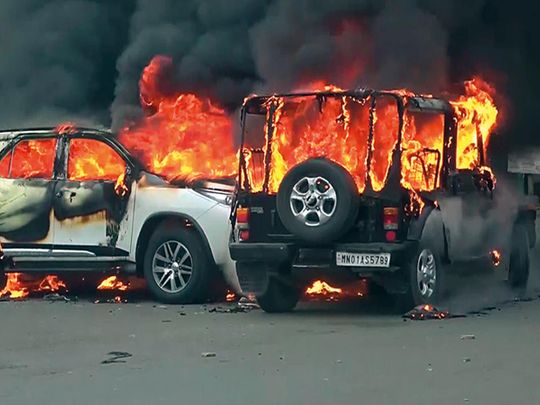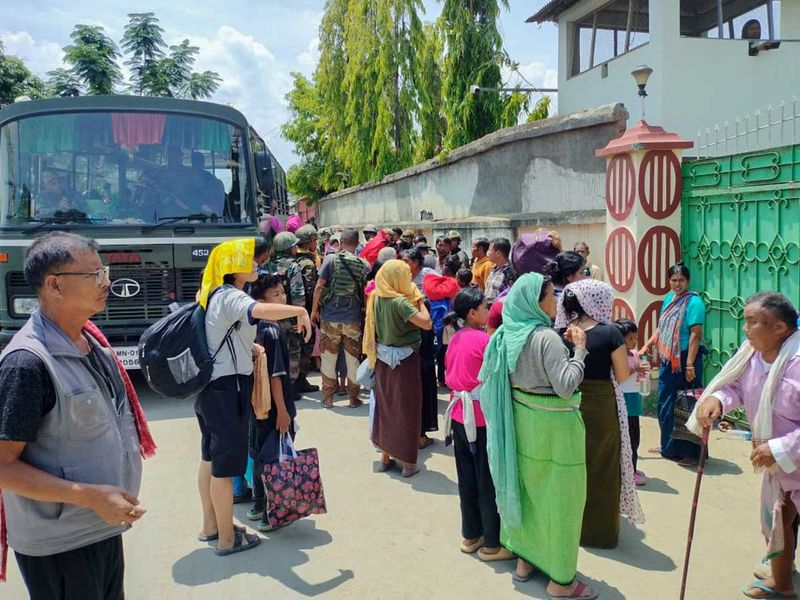
In my last column, I offered an overview of the complex historical dynamics and contemporary tensions behind the continuing conflagration in India’s North Eastern state, Manipur.
Manipur has a diverse population comprising various ethnic communities, including the dominant Meitei, plus the Nagas and Kukis, among others.
Its recorded history as an independent kingdom and buffer state goes back at least a thousand years. The ruler Loiyumba as far back as 1110 CE formally adopted a written “constitution,” Loyumba Shinyen. The ethnic conflict and separatist movements in the state may be traced to colonial times, perhaps even earlier.
They relate to the evolving relations of the erstwhile Manipur kingdom with China, Assam, Myanmar, and the expanding British colonial state in India, as well as its own ethnic and religious constituents.
Meiteis vs Kukis
The present conflict is largely between the Meiteis, who made up the majority of the Manipur princely state, and the Kuki community, one of the major ethnic groups in the region. In the past, Kukis organised themselves into several militant groups, including the Kuki National Organization (KNO) and the United People's Front (UPF).
It would be a truism to say that practically all insurgent movements, especially on our borders, need external support, including arms, ammunition, money, medicines, and camps outside India to retreat into.
With porous borders and external powers willing to support insurgency in India, it becomes relatively easy to exploit a community’s grievances and aspirations. An additional factor in recent decades is the illegal narcotics traffic, with the state witnessing very large numbers of addicts.
Home Minister Amit Shah’s three-day peace-building state visit, which began on May 29, tried to bring the feuding groups together for talks. A formula to resolve all outstanding disputes, as well as an inquiry into the causes of the violence, was set up.
Shah also urged the feuding Meiteis and Kukis to remove the blockades on NH 2, the highway connecting Imphal, the capital of Manipur, with Dimapur in Nagaland, near the Assam border. This is the lifeline of the state, transporting essential items from the Indian mainland into the border state.
Recent spate of violence
A few days after returning to Delhi on June 1, Shah also issued an appeal on a social media platform: “My sincerest appeal to the people of Manipur is to lift the blockades at the Imphal-Dimapur, NH-2 Highway, so that food, medicines, Petrol/Diesel, and other necessary items can reach the people. I also request that Civil Society Organisations do the needful in bringing consensus. Together only we can restore normalcy in this beautiful state.”
Well said. But despite his efforts, however, peace has yet to return to the state.
On Sunday, June 7, the central government appointed retired Gauhati High Court Chief Justice, Ajai Lamba, to head a committee, which also comprises, Himanshu Shekhar Das retired Indian Administrative Services officer, and Aloka Prabhakar, retired Indian Police Service officer, to inquire into the violence.
That same evening, a mob burned an ambulance in Iroisemba, Imphal. The exact toll is unknown since the police only recovered a couple of charred bones. No arrests have been made yet.
So far, the recent spate of violence, which erupted on May 3, has already claimed close to a 100 lives, with several hundreds injured and thousands displaced. One of the main causes of this round of violence is the demand of the Meiteis for Scheduled Tribe status, which other tribal groups, such as the Kukis, resist.
Meiteis are the largely Hindu Manipuri speaking ethnic group that comprised the old kingdom of Manipur. After independence, it was merged with the republic of India. Hill areas, with other tribal groups, largely Christian, were added to this area, to create the Indian state of Manipur.
However, because of restrictions going back to colonial tribes, Meiteis cannot own land in the hills, while the hill tribes are permitted to settle in the valleys and plains where Meiteis live. Armed gangs and private militia operate, sometimes with the alleged collusion of state authorities.
Weapons have been looted from law enforcement agencies, adding to lawlessness in the state. This has led to the demand for the resignation of the Chief Minister, N. Biren Singh, of the ruling Bharatiya Janata Party (BJP), who the Kukis allege is favouring the Meiteis.
The view that North Eastern hill tribes are historically ungovernable because they are traditionally autonomous and incredibly diverse is, in my view, untrue. The largely Buddhist states of Tibet, Bhutan, and Sikkim have been traditionally peaceful.

Root cause of regional conflicts
In fact, Bhutan, which came up with the idea of Gross National Happiness (GNH), is considered one of the safest, best governed, besides being among the happiest parts of the world. It stands to reason that any region of the world, regardless of its topography or ethnic composition, is amenable to good governance that contributes to the peace and prosperity of all sections of the population.
This, indeed, has been the watchword of the Modi government in delivering both equity and development to the Northeastern states, most of which, at present, have a BJP or partner government in place. In fact, the whole region is the cornerstone of the “look East” policy of the government.
With overland trade routes opening up all the way to Thailand and beyond, the North East is at the heart of India’s own version of the Belt and Road Initiative (BRI). Given its strategic location, it is imperative for the government to remove the obstacles to its development and economic integration with the rest of the country.
The challenges faced by Manipur demand a multifaceted approach. A high level of strategic insight, political will, local knowledge, and support from all groups would be needed for peace to be restored in Manipur.
Encouraging dialogue, promoting local culture, and celebrating the richness of diverse identities can contribute to bridging the gaps and promoting a more inclusive and harmonious region.
Addressing the root causes of regional conflicts, investing in infrastructure and development, and empowering local communities are crucial steps toward fostering lasting peace and progress. The seriousness in solving the dispute shown by the present government will, it is hoped, soon bear fruit.







_resources1_16a45059ca3_small.jpg)

